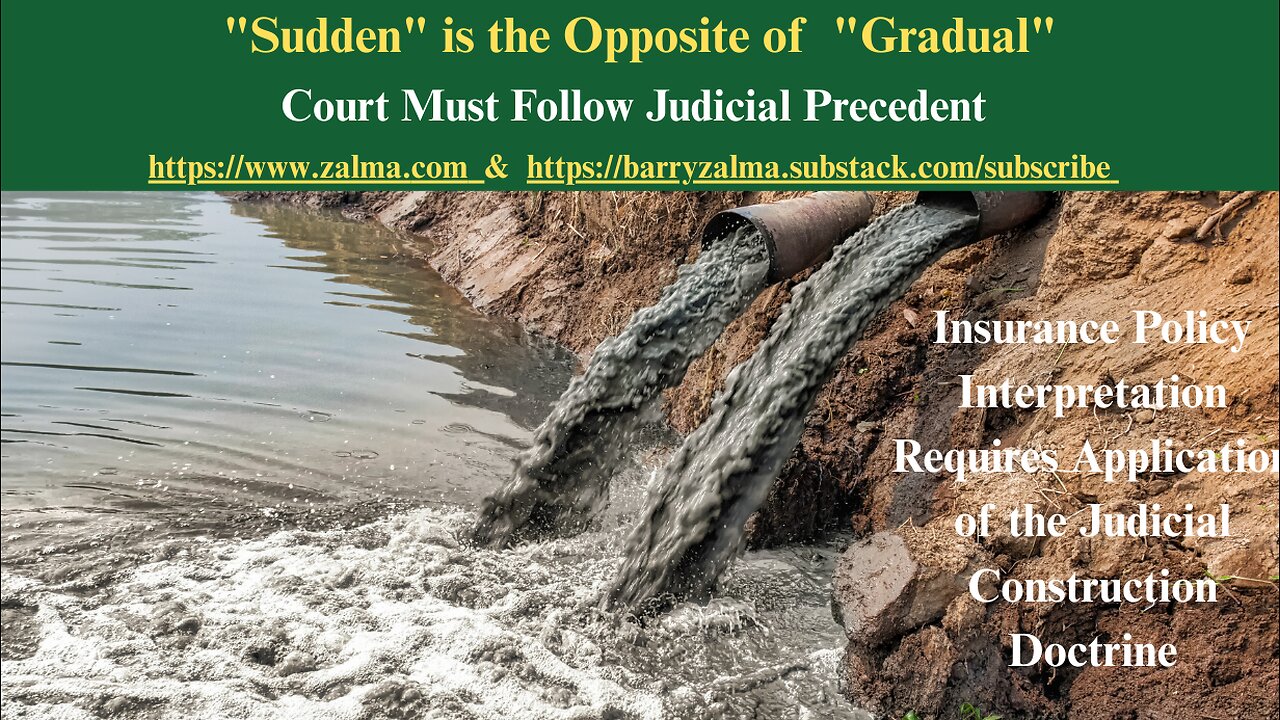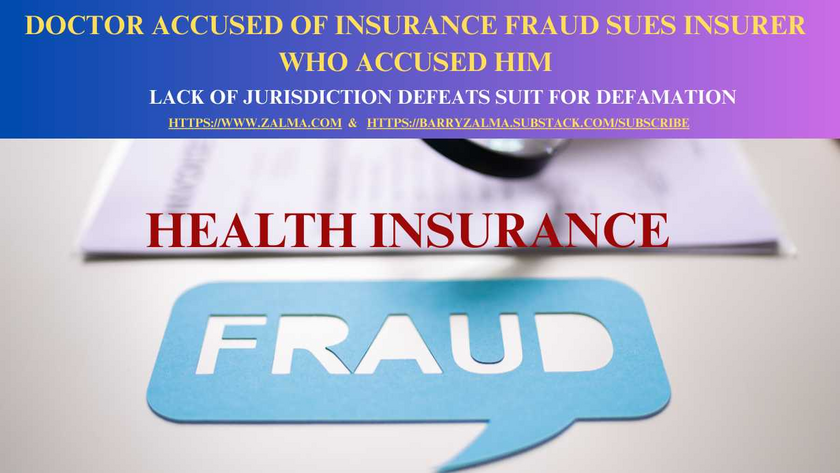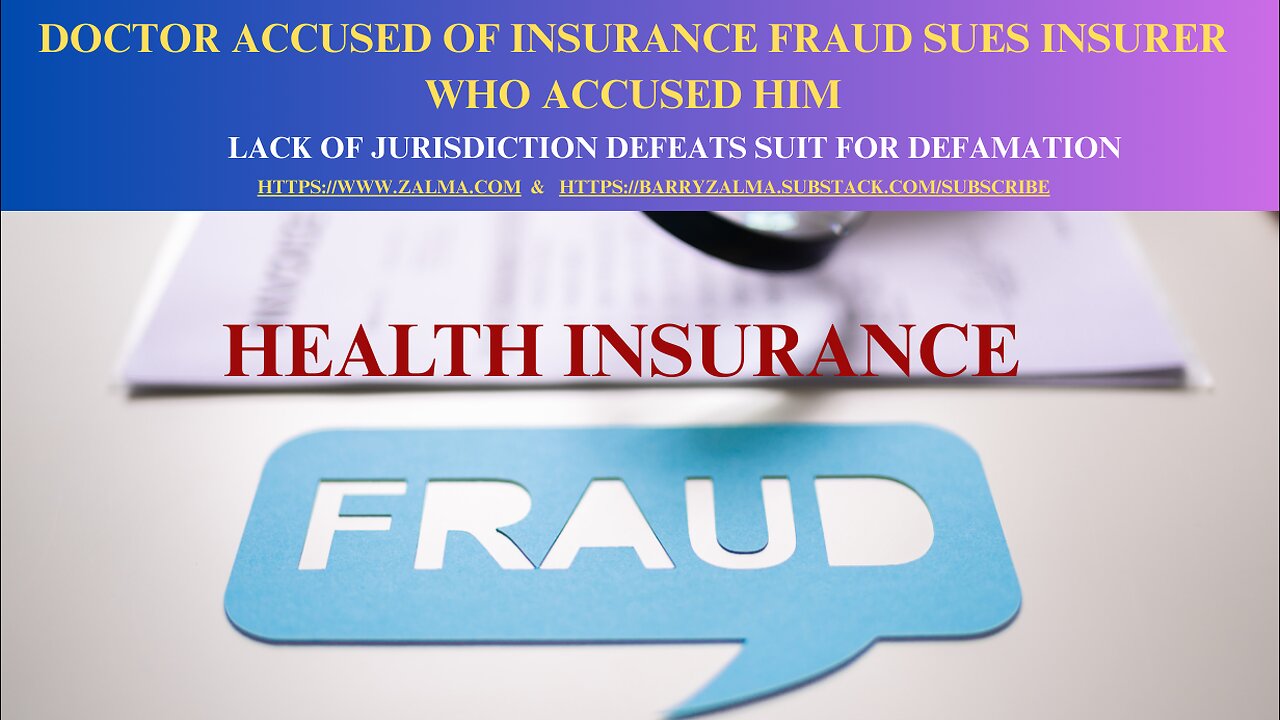
Indicators That Require a Fraud Investigation
Post 5047
Read the full article at https://lnkd.in/gPtYrtTr, see the full video at https://lnkd.in/gYXzFWBp and at https://lnkd.in/gQTJ3y5t, and at https://zalma.com/blog plus more than 5000 posts.
The Reason for the Study of Red Flags of Fraud
Suspicious insurance claims have common attributes. Insurers and their anti-fraud organizations have collated the common attributes into lists of indicators or red flags of fraud. The lists were created as training aids and to be used to determine whether further investigation is required to determine if a claim is legitimate or false and fraudulent. Continually growing, these lists are known as the “red flags” or “indicators” of fraud lists. There are many different categories, ranging from those associated with the claim itself or with insureds to indicators of specific types of fraud, such as bodily injury fraud or arson for profit.
If, when assessing a claim, three or more red flags are found the need for further investigation should be considered and evaluated by the claims person, a supervisor and the insurer’s special investigative unit. The existence of red flags does not mean a fraud has occurred. Red flags are only a signal to the adjuster to investigate further so that the suspicion may be either removed or confirmed. It is not any single indicator that alerts the adjuster to the possibility of a fraudulent claim but a combination of the red flag or red flags discovered coupled with the results of the thorough claims investigation.
Although the existence of multiple red flags should trigger an investigation, failure to investigate has been held to be reasonable as long as there are no patent inaccuracies or actual knowledge of false representations.
Red Flags Concerning the Insured
The insured has lived at his current address less than six months.
The insured has been with current employer less than six months.
The insured has a previous history of losses.
The insured cancels scheduled appointments with the adjuster for statements and/or Examination Under Oath.
The insured is employed with an insurer.
The insured is unusually aggressive and pressures for a quick settlement.
The insured does not have a telephone.
The insured’s telephone number is only a mobile cellular phone.
The insured is difficult to contact.
The insured claims to be self-employed but is vague about the business, and his responsibilities.
The insured is very knowledgeable about claims process and Insurance terminology.
The insured offers inducement for a quick settlement.
The insured is unsolicited new, walk-in business, not referred by an existing policyholder.
The insured’s address is not consistent with his employment or income.
The insured only gives a post office box as his address.
The insured is unemployed or in a transient occupation.
The insured seeks a copy of the policy before agreeing to insure.
The insured is vague about loss.
The insured’s report of loss is inconsistent.
The insured has a selective memory.
The insured has financial difficulties.
Red Flags Relating to Claimant
Insured is eager to accept blame for an accident.
Claimant retains lawyer immediately after the incident is reported.
Claimant and insured are from the same family.
Claimant and insured have the same address.
One or more parties present damages that are inconsistent with the facts of the loss.
Claimant’s lost earnings statement is handwritten or typed on blank paper rather than business letterhead.
Claimant has multiple insurance claims.
Several or all claimants treated at same clinic on same day.
Vehicle was purchased for cash.
Claimant has no proof of ownership of vehicle.
Vehicle recovered surgically stripped.
Claimant and insured know each other.
Red Flags Relating to Professionals
Attorney reports claim to insurance company.
Attorney is known as a lawyer who handles suspicious claims.
Attorney’s office is run by an administrator.
Attorney is rarely or never seen at the office.
Attorney lien or representation letter dated the day incident was reported.
High incidence of claims from attorney who recently passed the bar exam.
Attorney and body shop frequently appear linked.
All vehicles in reported loss are taken to the same body shop.
Clinic may have continued billing or treatment irregularities.
Clinic billing is done by an outside service.
Contractor has inadequate equipment to perform job.
Contractor arrives at loss site without being solicited.
Contractor offers cash incentives to get the job.
Contractor is not bonded or insured.
Clinic treats several or all of the claimants on same day.
Physician immediately refers claimant for a wide variety of tests not related to original claim.
Red Flags Relating to Facts of Loss
Witness version does not agree with claim as presented.
Presence of an overly enthusiastic witness at the scene of incident.
No police report.
All injuries are subjective.
CPT codes appear inflated or “up-coded”.
Losses occur just after coverage takes effect.
Losses occur just before coverage ceases.
Losses occur just after coverage limits have been increased.
Losses include a large amount of cash.
Commercial losses include old or non-saleable inventory.
Building is in deteriorating condition.
Building is located in a deteriorating neighborhood.
Fire scene investigation suggest property or contents were heavily over-insured.
Fire scene investigation reveals no remains of non-combustible items of scheduled property.
Fire scene investigation reveals no remains of expensive items used to justify an increase of limits.
Fire occurs at night.
Fire occurs after 11 p.m.
Commercial fire occurs on holiday, weekend or when business is closed.
Fire alarm fails to work.
Sprinkler system fails to work at time of loss.
Insured over-documents losses.
Red Flags Common to a Claim
An adjuster should consider further investigation if a claim occurs:
shortly after the issuance of the policy;
shortly after the limits of the policy are increased;
in an insured’s first insurance;
shortly before the expiration of a policy;
within days of a notice of cancellation being served; or
on a policy acquired from an agent far from the insured’s home or business.
Arson for Profit Red Flags
more than one mortgage,
late payments,
divorce,
prior claims,
multiple claims,
problems affecting title to the property,
over-insurance,
an increase in insurance coverage right before the claim,
recent cancellations of insurance held with prior insurers,
liens,
threats of foreclosure on the property,
lawsuits, and
recent job transfers.
Red Flags Connected with the Insured or Claimant
Adjusters evaluate the manner in which the insured makes a claim. A few red flags that may raise suspicions include some of the following when the insured or claimant:
retains or is represented by counsel on the day of the loss;
does not want to retain counsel;
is represented by a public adjuster on the day of the loss;
wants a settlement approved quickly;
does not want the claim to go to a supervisor, regional office, or claims committee for authority;
is exceedingly cooperative and undemanding;
is exceedingly demanding and threatens a bad faith suit from the date of first contact;
demands a proof of loss form at the initial meeting;
is familiar with insurance claims terminology;
asks for the claims manager by name;
is familiar with the adjuster’s authority limits, and wants to settle for a sum within those limits;
handles all business in person (thus avoiding mail and potential
prosecution for violation of federal mail fraud statutes);
provides an address that is a post office box, mail drop, or hotel; or
reduces the demand for settlement when it is suggested by the adjuster that he or she file suit.
The adjuster or investigator should also pay attention to the insured’s or claimant’s history and background, including their financial situation. Once again, red flags indicate that further investigation may be needed if the insured:
has a history of multiple, similar claims;
has a history of more than two lawsuits;
is recently separated or divorced (indicating a possible financial strain);
was recently laid off a job, has a spotty work history, or extended period of unemployment; or
has a history of gambling, alcohol, or drug abuse.
Fraud by Company Officials
Insurers and their officers commit fraud in many ways, including, but not limited to:
Submission of falsified financial statements.
Misuse of company funds.
Issuance of unauthorized insurance policies.
Insurance plans not authorized by the state Departments of Insurance.
Individuals not licensed to do the business of insurance.
Fraudulent group/individual health plans.
Some examples of fraud by insurers claimed under homeowners policies:
Insisting that the insured allow the insurer to generate the loss inventory after a covered loss.
Issuing policies with a declaration page showing policy limits that the insurer knows is higher than the actual cash value or replacement cost of the property, the risk of loss of which is insured, to take premium for a greater risk than that actually taken.
Using economic coercion to force the claimant to use their preferred repair vendor.
Undercutting market rates to lure employers to acquire Workers’ Compensation insurance while failing to properly maintain sufficient funds in reserve to cover claims.
Use of an unqualified or dishonest Medical Examiner to avoid payment of claims.
Use of unethical defense attorneys to avoid payments of claims.
Use of unethical private investigators.
Use of Special Investigative Unit investigators whose only purpose is to deny claims rather than in an effort to avoid fraud.
It is “important to remember that the red flags indicate that there may be some evidence consistent with an insurance fraud scheme. Any one or two of these by themselves may not raise suspicions; however, when several red flags present or a pattern begins to emerge, the claims person or SIU investigator should investigate further and/or forward the suspicion to the state agency required to investigate the crime of insurance fraud.
Adapted from my book Insurance Fraud – Volume I & Volume II Second Edition Available as a Kindle book; Available as a Hardcover; Available as a Paperback
(c) 2025 Barry Zalma & ClaimSchool, Inc.
Please tell your friends and colleagues about this blog and the videos and let them subscribe to the blog and the videos.
Subscribe to my substack at https://barryzalma.substack.com/subscribe
Go to X @bzalma; Go to Newsbreak.com https://www.newsbreak.com/@c/1653419?s=01; Go to Barry Zalma videos at Rumble.com at https://rumble.com/account/content?type=all; Go to Barry Zalma on YouTube- https://www.youtube.com/channel/UCysiZklEtxZsSF9DfC0Expg
Go to the Insurance Claims Library – https://lnkd.in/gwEYk
Share this:
Montana County Attorney Admits to Insurance Fraud & Is Only Suspended from Practice for 60 Days
Post 5251
Read the full article at https://lnkd.in/gnBaCjmv, see the video at https://lnkd.in/gfpVsyAd and at https://lnkd.in/gC73Nd8z, and at https://zalma.com/blog plus more than 5250 posts.
A Lawyer Who Commits Insurance Fraud and Pleas to a Lower Charge Only Suspended
In The Matter Of: Naomi R. Leisz, Attorney at Law, No. PR 25-0150, Supreme Court of Montana (December 23, 2025) the Montana Office of Disciplinary Counsel (ODC) filed a formal disciplinary complaint with the Commission on Practice (Commission) against Montana attorney Naomi R. Leisz.
On September 25, 2025, Leisz tendered a conditional admission and affidavit of consent. Leisz acknowledged the material facts of the complaint were true and she had violated the Montana Rules of Professional Conduct as alleged by ODC.
ADMISSIONS
Leisz admitted that in April 2022, her minor son was involved in a car accident in which he hit a power pole. Leisz’s son ...
Montana County Attorney Admits to Insurance Fraud & Is Only Suspended from Practice for 60 Days
Post 5251
Read the full article at https://lnkd.in/gnBaCjmv, see the video at https://lnkd.in/gfpVsyAd and at https://lnkd.in/gC73Nd8z, and at https://zalma.com/blog plus more than 5250 posts.
A Lawyer Who Commits Insurance Fraud and Pleas to a Lower Charge Only Suspended
In The Matter Of: Naomi R. Leisz, Attorney at Law, No. PR 25-0150, Supreme Court of Montana (December 23, 2025) the Montana Office of Disciplinary Counsel (ODC) filed a formal disciplinary complaint with the Commission on Practice (Commission) against Montana attorney Naomi R. Leisz.
On September 25, 2025, Leisz tendered a conditional admission and affidavit of consent. Leisz acknowledged the material facts of the complaint were true and she had violated the Montana Rules of Professional Conduct as alleged by ODC.
ADMISSIONS
Leisz admitted that in April 2022, her minor son was involved in a car accident in which he hit a power pole. Leisz’s son ...
Insurer’s Exclusion for Claims of Assault & Battery is Effective
Post 5250
Read the full article at https://lnkd.in/gBzt2vw9, see the video at https://lnkd.in/gEBBE-e6 and at https://lnkd.in/gk7EcVn9, and at https://zalma.com/blog plus more than 5250 posts.
Bar Fight With Security is an Excluded Assault & Battery
In The Cincinnati Specialty Underwriters Insurance Company v. Mainline Private Security, LLC, et al., Civil Action No. 24-3871, United States District Court, E.D. Pennsylvania (December 16, 2025) two violent attacks occurred in Philadelphia involving young men, Eric Pope (who died) and Rishabh Abhyankar (who suffered catastrophic injuries). Both incidents involved security guards provided by Mainline Private Security, LLC (“Mainline”) at local bars. The estates of the victims sued the attackers, the bars, and Mainline for negligence and assault/battery. The insurer exhausted a special limit and then denied defense or indemnity to Mainline Private Security.
INSURANCE COVERAGE
Mainline had purchased a commercial ...
Court Must Follow Judicial Precedent
Post 5252
Read the full article at https://www.linkedin.com/pulse/sudden-opposite-gradual-barry-zalma-esq-cfe-h7qmc, see the video at and at and at https://zalma.com/blog plus more than 5250 posts.
Insurance Policy Interpretation Requires Application of the Judicial Construction Doctrine
In Montrose Chemical Corporation Of California v. The Superior Court Of Los Angeles County, Canadian Universal Insurance Company, Inc., et al., B335073, Court of Appeal, 337 Cal.Rptr.3d 222 (9/30/2025) the Court of Appeal refused to allow extrinsic evidence to interpret the word “sudden” in qualified pollution exclusions (QPEs) as including gradual but unexpected pollution. The court held that, under controlling California appellate precedent, the term “sudden” in these standard-form exclusions unambiguously includes a temporal element (abruptness) and cannot reasonably be construed to mean ...


Lack of Jurisdiction Defeats Suit for Defamation
Post 5250
Posted on December 29, 2025 by Barry Zalma
See the video at and at
He Who Represents Himself in a Lawsuit has a Fool for a Client
In Pankaj Merchia v. United Healthcare Services, Inc., Civil Action No. 24-2700 (RC), United States District Court, District of Columbia (December 22, 2025)
FACTUAL BACKGROUND
Parties & Claims:
The plaintiff, Pankaj Merchia, is a physician, scientist, engineer, and entrepreneur, proceeding pro se. Merchia sued United Healthcare Services, Inc., a Minnesota-based medical insurance company, for defamation and related claims. The core allegation is that United Healthcare falsely accused Merchia of healthcare fraud, which led to his indictment and arrest in Massachusetts, causing reputational and business harm in the District of Columbia and nationwide.
Underlying Events:
The alleged defamation occurred when United ...


Zalma’s Insurance Fraud Letter
Read the full article at https://lnkd.in/dG829BF6; see the video at https://lnkd.in/dyCggZMZ and at https://lnkd.in/d6a9QdDd.
ZIFL Volume 29, Issue 24
Subscribe to the e-mail Version of ZIFL, it’s Free! https://visitor.r20.constantcontact.com/manage/optin?v=001Gb86hroKqEYVdo-PWnMUkcitKvwMc3HNWiyrn6jw8ERzpnmgU_oNjTrm1U1YGZ7_ay4AZ7_mCLQBKsXokYWFyD_Xo_zMFYUMovVTCgTAs7liC1eR4LsDBrk2zBNDMBPp7Bq0VeAA-SNvk6xgrgl8dNR0BjCMTm_gE7bAycDEHwRXFAoyVjSABkXPPaG2Jb3SEvkeZXRXPDs%3D
Zalma’s Insurance Fraud Letter (ZIFL) continues its 29th year of publication dedicated to those involved in reducing the effect of insurance fraud. ZIFL is published 24 times a year by ClaimSchool and is written by Barry Zalma. It is provided FREE to anyone who visits the site at http://zalma.com/zalmas-insurance-fraud-letter-2/
Zalma’s Insurance Fraud Letter
Merry Christmas & Happy Hannukah
Read the following Articles from the December 15, 2025 issue:
Read the full 19 page issue of ZIFL at ...













